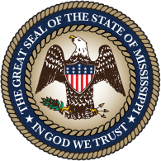OPERATING CERTIFICATE
Agricultural Aircraft Operating Certificate issued by FAA FSDO must be available at Home Base.
Facsimile of the above listed certificate Must Be On Board each aircraft operated.
Current FAR Part 91, 137 & NTSB 830 available at Home Base (strongly recommended).
Emergency Response Telephone Number should be conspicuously posted.
Poison Control Center Telephone Number should be conspicuously posted.
APPLICATION RECORDS: (must be maintained for 24 months)
Customer Name and Address.
Date each service was provided.
Name and quantity of material dispensed.
NOTIFICATION TO FSDO:
Address change, Notify in writing prior to change of address.
Name change, FAA Form 8710-3 amendment, and notify in writing prior to change.
Addition or change of aircraft, notify in writing as soon as possible.
Change of chief supervisor or pilot if single pilot operation, notify in writing I immediately.
Telephone number change, notify in writing immediately.
PILOT RECORDS: (must be maintained for 24 months)
Pilot name, pilot address and FAA pilot certificate number and grade.
Medical certificate class and date of issue.
Knowledge and skill test letter or endorsement, and/or chief supervisor letter.
Flight review compliance date.
NOTE: A recommended way to meet this requirement is to keep a file on each pilot. That file should contain a current copy of the airman’s pilot certificate, medical certificate, flight review logbook endorsement and knowledge and skill test. This file should be updated annually or whenever a change occurs.
AIRCRAFT:
Must be available, with dispensing equipment installed for inspection.
Aircraft must be airworthy, at least one must be available.
Restricted placards must be in place and legible.
Hopper maximum weight placard must be in place and legible.
NOTE: A minimum of one airworthy aircraft must be available at operations base for inspection.
AIRCRAFT RECORDS:
Registration certificate, current for aircraft/owner.
Airworthiness certificate.
NOTE: If operating from a remote site and records are not readily available due to distance from home base, then they must be at that location.
MAINTENANCE RECORDS:
Airframe record/logbook(s), for all operated aircraft must be available at the home base.
Engine record/logbook(s), for all operated aircraft must be at the home base. Turbine engine records must include a list of time/cycle limited components.
Propeller record/logbook(s), for all operated aircraft, unless included in airframe record.
List of airworthiness directive – showing applicability; status (applicable or not applicable); if not applicable, why; date/time accomplished; repetitive or not; if repetitive, due date or time.
FAA Form 337, for All maintenance/alternations for which required.
NOTE: An annual inspection does not convey airworthiness beyond the date of inspection. Airworthiness is a continuous process and is the responsibility of the owner/operator and the pilot in command.
ACCIDENT/INCIDENT REPORTING:
ACCIDENT – Occurrence involving serious injury, death or substantial damage to aircraft.
REQUIRES IMMEDIATE NTSB NOTIFICATION.
INCIDENT – Occurrence other than an accident which affect or could affect the safety of operations.
- SEE NTSB 830.5 for notification requirements.
ADDITIONAL NOTICE – Notify your Flight Standards District Office of any occurrences.
NOTE: One call to the nearest Flight Service Station reporting an accident will provide initial notification when requested, and can aid in providing emergency help.
Forms, Laws & Regulations
» Laws
» Regulations
Contact
Laura Vollor, Deputy Director
LauraV@mdac.ms.gov
P.O. Box 5207
Mississippi State, MS 39762
Telephone: 662.325.5561
Fax: 662.325.8397
